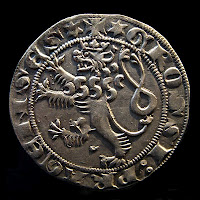 At the end of the XV century — early XVI century Europe saw the rise of trade relations with the sharp increase in cash flow. At the same time begins the influx of a large amount of silver from America, where the Spaniards discovered rich deposits. And in Europe itself the new silver mines were also opened and developed thanks to the latest advances in technology at the time. All this led to the release of large amounts of silver as a raw material and a simultaneous demand for it in the form of money as silver coins then were the main cash equivalent.
At the end of the XV century — early XVI century Europe saw the rise of trade relations with the sharp increase in cash flow. At the same time begins the influx of a large amount of silver from America, where the Spaniards discovered rich deposits. And in Europe itself the new silver mines were also opened and developed thanks to the latest advances in technology at the time. All this led to the release of large amounts of silver as a raw material and a simultaneous demand for it in the form of money as silver coins then were the main cash equivalent.суббота, 20 июля 2013 г.
Coining technology — Part 3: Machine mintage of testons and thalers
 At the end of the XV century — early XVI century Europe saw the rise of trade relations with the sharp increase in cash flow. At the same time begins the influx of a large amount of silver from America, where the Spaniards discovered rich deposits. And in Europe itself the new silver mines were also opened and developed thanks to the latest advances in technology at the time. All this led to the release of large amounts of silver as a raw material and a simultaneous demand for it in the form of money as silver coins then were the main cash equivalent.
At the end of the XV century — early XVI century Europe saw the rise of trade relations with the sharp increase in cash flow. At the same time begins the influx of a large amount of silver from America, where the Spaniards discovered rich deposits. And in Europe itself the new silver mines were also opened and developed thanks to the latest advances in technology at the time. All this led to the release of large amounts of silver as a raw material and a simultaneous demand for it in the form of money as silver coins then were the main cash equivalent.Coining technology – Part 2, Middle Ages – from barbaric imitations to a penny.
Degradation of the Roman coinage coincided with the political and economic crisis of the Western Roman Empire in the V century AD. After the Rome’s fall money circulation was on the decline. The invaders used the stolen Roman coins, before its resource was not exhausted, and numerous barbarian kingdoms faced with the lack of funds.
Coining technology — part I. Ancient Greece to Late Roman Empire
As well as thousands years ago, before becoming a coin a piece of metal has a long way to go – from a mine to master’s stamp.
Here on these pages we shall try to follow and illustrate the evolution of the process of coining in Europe from Hellenes masterpieces, through brackteates to large and nice testons and thalers.
Подписаться на:
Сообщения (Atom)


